瑰丽梵星:500年印度珠宝风华
2018-09-20张亚萌ZHANGYameng
文本刊记者 张亚萌 ZHANG Yameng
图片版权归阿勒萨尼收藏(The Al Thani Collection)所有
Photo's copyright is owned by The Al Thani Collection
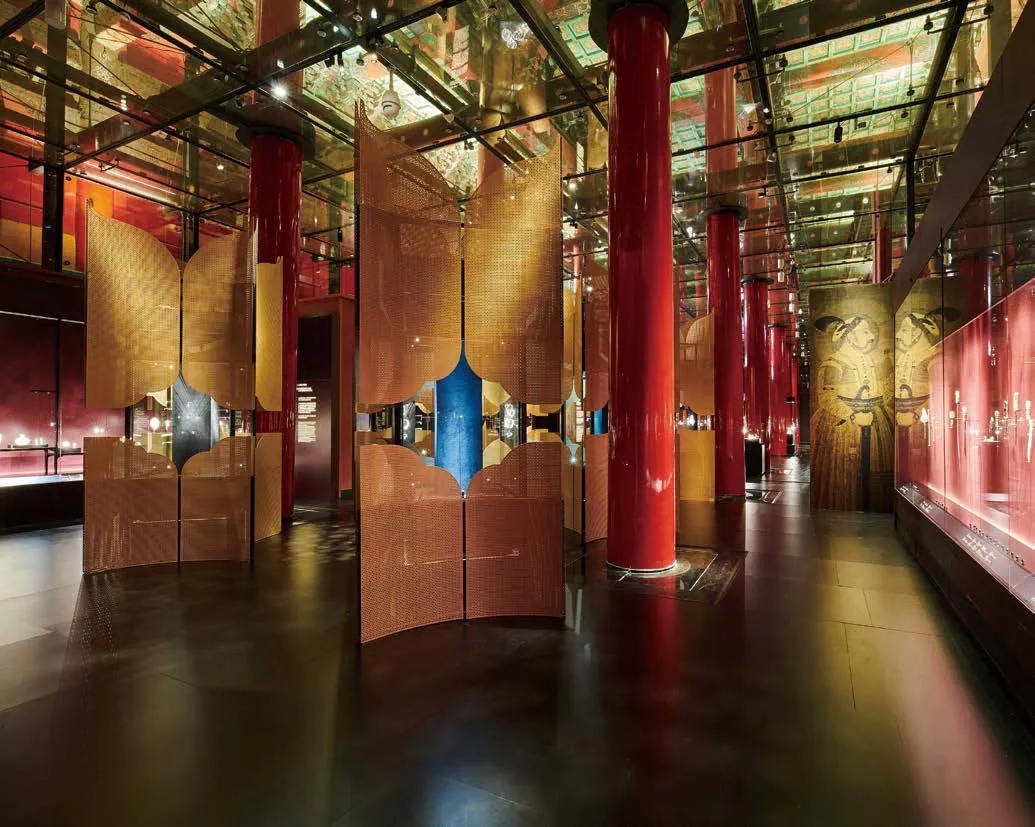
展览现场Site of exhibition
从成吉思汗和帖木儿的后裔到多位知名印度王公的时代,跨越5个世纪,270余件珠宝杰作带领观众探寻创作于南亚次大陆的宝石艺术和灵感,这些源于印度的珠宝珍罕杰作,展现了绵延500年的精致艺术品味和完美手工工艺——4月17日至6月18日,包含“皇室臻选:艺术珍品展”和“瑰丽梵星:印度高级珠宝展”两大部分的“铭心撷珍——卡塔尔阿勒萨尼收藏展”呈现在故宫博物院午门展厅和西雁翅楼展厅。
“皇室臻选:艺术珍品展”的280余件艺术文物珍品跨域五千年人类文明历程,古代的奇珍异宝与巧夺天工的现代艺术佳作汇集一堂,共同代表了世界范围内艺术成就的巅峰。然而,对于珠宝爱好者,最激动的莫过于看到“瑰丽梵星:印度高级珠宝展”中的大珠宝啦!
本次收藏展上270件(组)印度珠宝艺术的巅峰之作呈现了从莫卧儿王朝直至现代的印度珠宝艺术。展品中引人注目的藏品众多,其中不乏富有历史意义的钻石、皇室的宝石外壳制成品、宝石装饰的王权象征物、头巾配饰,以及卡地亚等欧洲知名珠宝制造商在印度传统珠宝形式的启发下为大公们创作的精美珍宝。
“瑰丽梵星”的故事从莫卧儿王朝的缔造开始。希尔·乌德丁·巴布尔是帖木儿与成吉思汗的后裔,他于1526年来到印度建立起一代王朝,从此这个莫卧儿帝国便与搜集各类珍贵宝石结下不解之缘。莫卧儿人主要通过征服、馈赠与购买来获取宝石藏品。他们继承了祖先帖木儿的传统,在最珍贵的宝石上刻上自己的名字并将其作为传家宝留给王朝后裔。沙贾汗统治时期对珠宝的推崇达到了顶峰,沙贾汗命人制作了一个辉煌的王座,用珐琅彩金制成,并镶嵌大量钻石、绿宝石、尖晶石、红宝石和珍珠。
展览中的许多印度珠宝采用了特殊的镶嵌工艺,这种工艺将宝石镶入黄金时不使用镶爪,而代之以高延展性的纯金箔,在宝石周围形成分子链状镶嵌结构。据介绍,那时的金匠们能使用一种铁针,让黄金如丝缎般柔韧地环绕着各种宝石,并将宝石固定得十分牢固。这一工艺意味着印度的珠宝通常都是代表性的密封镶嵌。与西方喜欢塑造出对称形状不同,印度珠宝在切割时,会尽可能保留珠宝的原有尺寸。另一项制作珠宝的独特技术是上釉工艺,首次出现于莫卧儿时期,该技术的灵感可能源自文艺复兴时期的精美珐琅首饰。莫卧儿时期的珠宝加工法形成了整个南亚次大陆的品位风格,直至18世纪莫卧儿帝国崩溃,但其建立的风格样式却一直绵延不息。
19世纪,印度的时尚珠宝日益受到西方的影响,尤其在款式、宝石刻面以及镶嵌底座方面尤为突出,采用了西方敞口式抓镶底座来固定宝石。而在英国统治印度时期的印度王室被剥夺了所有军事和政治实权,在这种情况下,权力和地位越来越多地通过佩戴更为奢华的珠宝得以体现。19世纪末,印度大公们开始使用铂金取代黄金,作为底座镶嵌最为贵重的宝石,最终采用了欧洲流行的镶嵌风格。
1911年,雅克·卡地亚前往印度,希望寻找最新的宝石客户和来源。在访问期间,他与印度王室持续接触,给公司带来一系列大订单。以卡地亚为代表的英国和法国珠宝商迅速开始向王公贵族提供产品和定制服务。同时,欧洲珠宝商还同时收集当地作品,通过重新安装或镶嵌,对当时风靡时尚圈的异域风格加以补充。印度珠宝独特的审美风格也开始激发西方的前卫珠宝创作。而在当代,相比西方珠宝中占据主流地位的几何刻面宝石,印度珠宝更有着独特的外形和切面:刻有印度图案,采用定制切割的平面钻石和天然珍珠,珠宝被嵌入隐形式铂金镶孔。
“作为阿勒萨尼收藏的创始人,人们常常问我为何会收集这一系列的藏品。收藏艺术品源于我对历史和美好事物全身心的热爱,起初我的收藏仅有几件艺术品,它们不仅外观迷人,更蕴含历史意义。美学与历史的交融常常体现在珠宝作品中。”阿勒萨尼收藏的主人、卡塔尔皇室成员谢赫·哈马德·本·阿卜杜拉·阿勒萨尼殿下表示。
珠宝的历史,也有可能是地理的历史——自古以来,印度因其富饶的珍稀宝石矿藏和精湛的珠宝制作工艺在全球享有盛誉。这种珠宝文化传统在一定程度上拜自然环境所赐——南亚早已是宝石之乡:德干高原出产质地精良的钻石,克什米尔地区出产光彩夺目的蓝宝石,巴达赫尚则是珍贵的尖晶石的来源地。此外,人们还可以从临近的斯里兰卡与缅甸获得蓝宝石、红宝石,并从波斯湾进口珍珠。南美洲哥伦比亚的祖母绿矿被发现后,欧洲商人又通过商业贸易将这些祖母绿带到印度。
珠宝的故事,也更是文化的故事——从古时起,南亚次大陆就向东方和西方出口香料及纺织品,借此换取金银。珍贵金属被心灵手巧的印度工匠幻化为一件件艺术品,达到极高的艺术境界,此行业一直延续至今。在印度,珠宝不停留在装饰层面,每一种宝石都寓意深远,或表征寰宇深意,或求庇吉祥星象;而在通俗文化中,那些室内装饰、礼服、武器和家具上的珠宝的特定样式反映出阶级、种姓、地区、婚姻状况或财富。
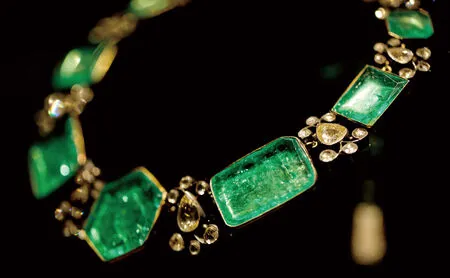
祖母绿项链Emerald necklace
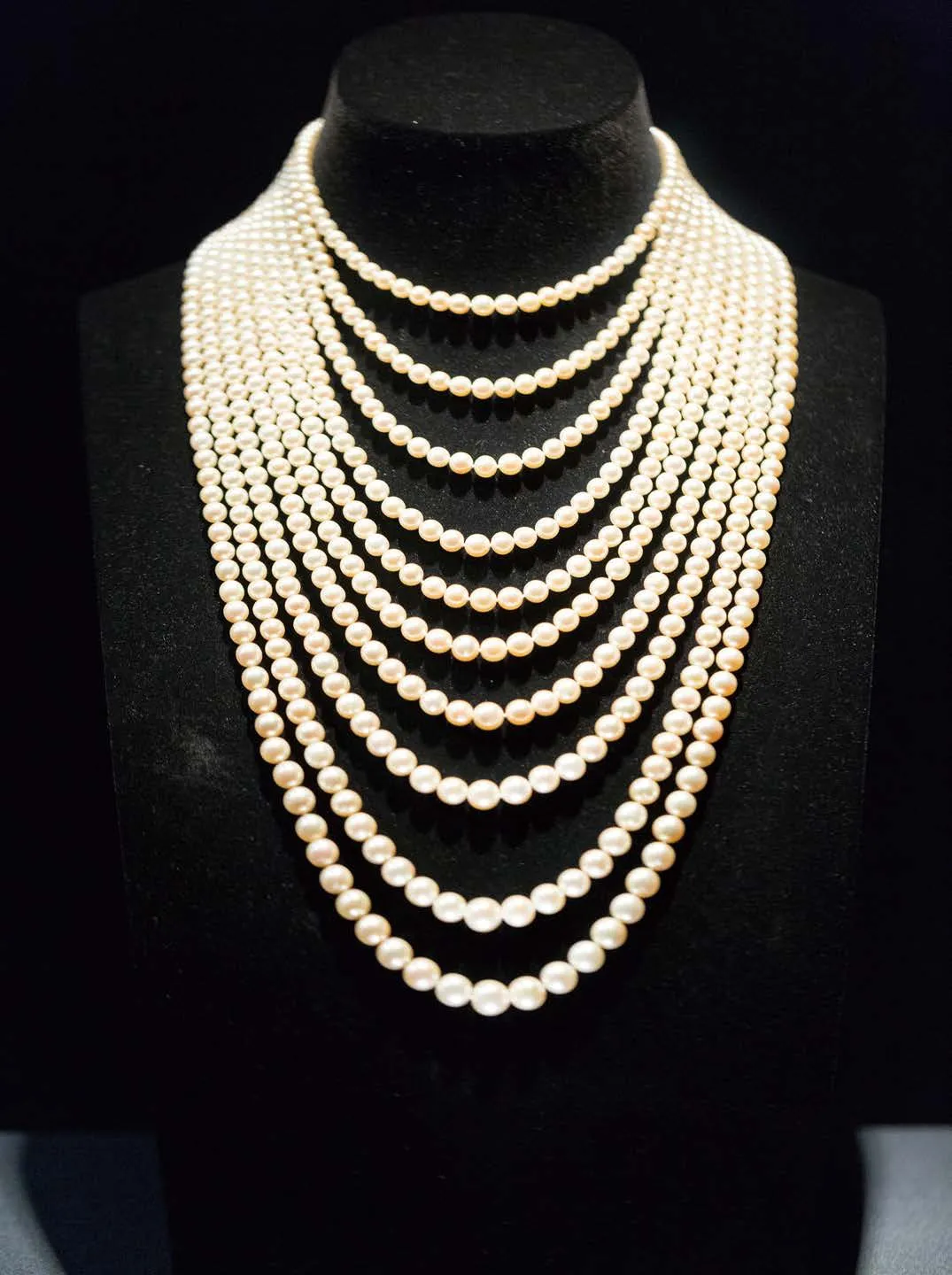
珍珠项链Pearl necklace
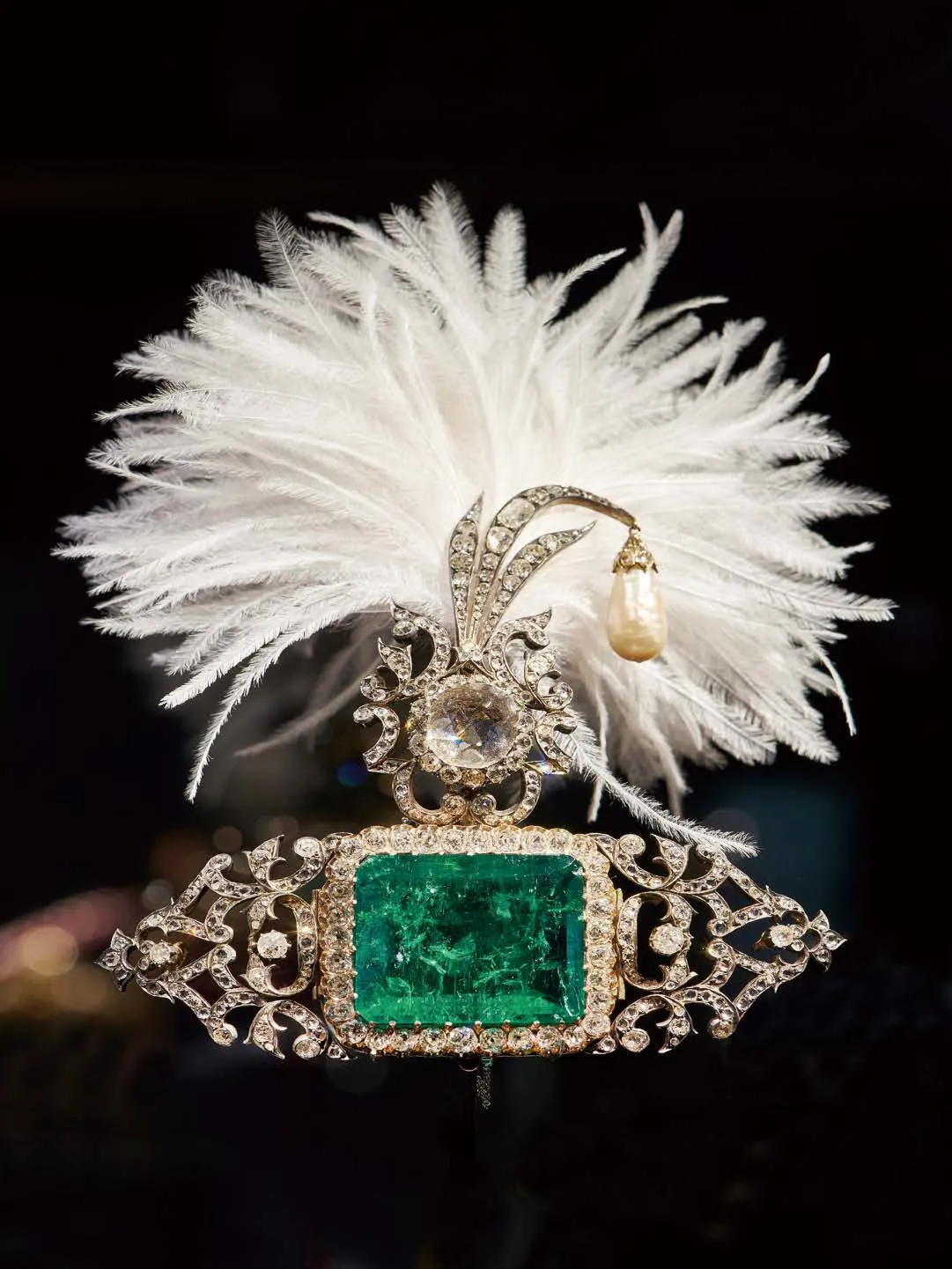
头巾配饰Headscarf accessories
From the ages of Genghis Khan and Timur to several well-known Indian monarchs, more than 270 jewelry masterpieces over five centuries led the audiences to explore the gemstone art and inspiration created in the South Asian subcontinent, showcasing 500 years of exquisite artwork and perfect handmade craftsmanship, the Treasures from The Al Thani Collection including such two major parts as Masterpieces from a Royal Collection and Gems and Jewels from India has been held at the Meridian Gallery and West Yanchi Building Showroom of the Palace Museum from April 17thto June 18th.
More than 280 pieces of art treasures of the Masterpieces froma Royal Collectioncross the 5000-year domain of human civilization. The ancient treasures and the masterpieces of modern art are brought together to represent the pinnacle of artistic achievement worldwide.However, the most exciting moment for Amateurs like me is to witness the large jewels in"Gems and Jewels from India"!
The 270 pieces (set) of India's jewelry art featured in this collection exhibition presented the Indian jewelry art from the Mughal Empire to modern times.Amongst all the exhibits,there are a large number of eye-catching collections, including historical diamonds, imperial jeweled shells, royal emblems decorated by jewels, headscarf accessories, and the magnificent treasures for dukes and princes with the inspiration from Indian traditional jewelry styles from famous European.The story of "Magnificent Stars" begins with the creation of the Mughal Empire.Hill Uddin Babur is a descendant of Timur and Genghis Khan. He arrived in India in 1526 to establish a generation of dynasties. Since then, the Mughal Empire has been inseparable from the collection of various precious stones.Mughal people mainly acquired gemstones through conquests and gifts for purchase. They have inherited the tradition of their ancestor Timur by engravingpeople’s names on the most precious stone and left it as an heirloom to the descendants of the dynasty.During the reign of Shah Jehan, the respect for jewelry was at its peak. Shah Jehanhas ordered to produce a brilliant throne made of enamel gold and was inlaid with diamonds, emeralds, spinels,rubies, and pearls.
Many of India's jewels in the exhibition use a special tessellation process that uses jewels set in gold without claws, but uses highly malleable pure gold foil to form a molecular chain-like mosaic around the jewels.According to reports, goldsmiths at that time could use a kind of iron needle to allow gold to be silky and satin-like to surround various kinds of precious stones,and fix the stones most firmly. This process means that Indian jewelry is usually a representative of seal inlaid.Unlike the West preferring to create symmetrical shapes, Indian jewelry retains the original size of the jewelry as much as possible.Another unique technique for Indian jewelry is the glazing process, which first appeared in the Mughal period. This technique might be inspired by the fine enamel jewelry of Renaissance.The Mughal jewelry processing method has formed the taste style of the entire South Asian subcontinent until the 18thcentury when Mughal Empire collapsed, but its well-established style has continued to linger.
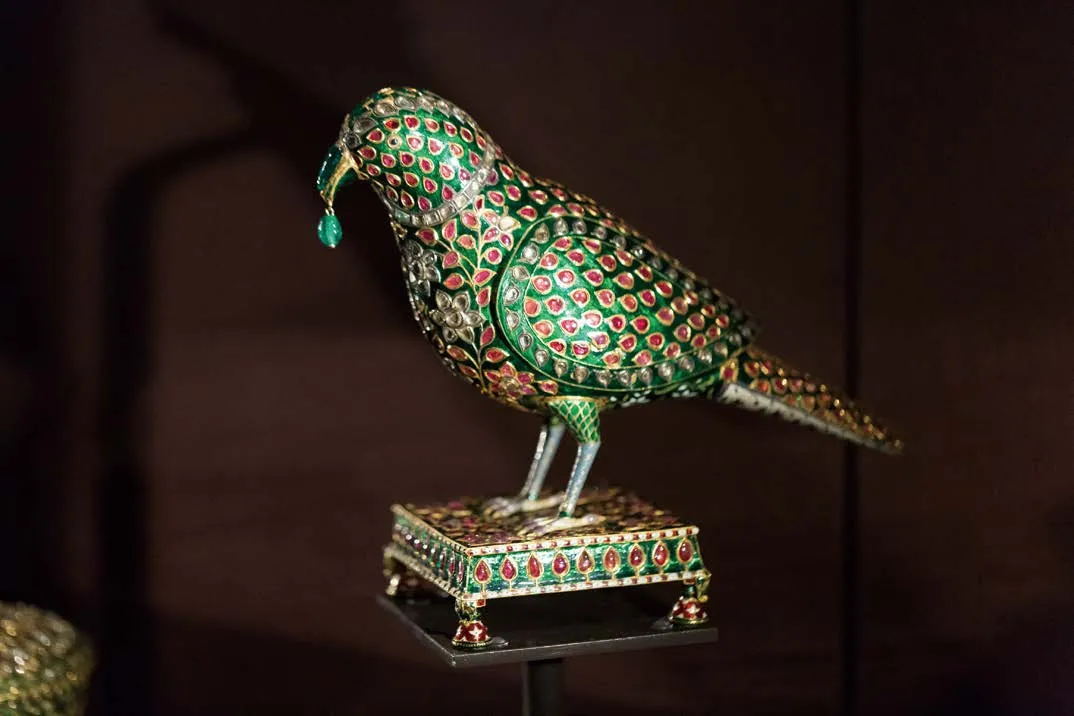
鹦鹉Parrot
In the 19thcentury, Indian fashion jewelry has been increasingly influenced by the West, especially in the style design, gemstone facets and inlaid pedestals. Western open-style grabbed pedestal was applied to fix the gems. While the Indian royal family was ruled the British colonists, it was deprived of all military and political power. Under such circumstances, power and status were increasingly embodied by wearing more luxurious jewelry.At the end of the 19thcentury, Indian dukes began to use platinum to replace gold as the most precious jewel in the base, and eventually adopted the mosaic style, which was most popular in Europe at that time.
In 1911, Jacques Cartier traveled to India with the hope of finding the newest gemstone customers and sources. During the visit, he continued to contact with the Indian royal family and brought a series of large orders to the company. The British and French jewelers represented by Cartier quickly began offering products and customized services to the royal family.At the same time, European jewelers also collected local works at the same time and re-installed or inlaid them to complement the exotic styles that were fashionable at the time. The unique aesthetic style of Indian jewelry has also initiated to inspire Western avant-garde jewelry creation.However in contemporary times, Indian jewelry has a unique shape and aspect compared with the geometric faceted gem that dominates the Western jewelry:Indian motifs, customized-cut flat diamonds and natural pearls, jewelry embedded in the hidden form of platinum hole.
"As the founder of the Al-Thani collection, people often asked why I would collect this series of collections. The collection of artworks stems from my passion for history and good subjects. At first my collection had only a few artworks. They not only look fascinating, but also have historical significance. The blend of aesthetics and history is often embodied in jewelry works." Master of Al-Thani collection, a member of Qatar royal family, His Highness Sheikh Hamad bin Abdullah Al Thani said.The history of jewelry may also be historyof geography---since the ancient times,India has gained worldwide reputation for its rich and rare gemstone deposits and exquisite jewelry making techniques. This jewelry culture tradition, to a certain extent, thanks to the natural environment - South Asia has long been the home of gems:the Deccan Plateau produces excellent diamonds, Kashmir generates dazzling sapphires, and Badakhshan is the source of precious spinel.In addition, people could also obtain sapphires and rubies from neighboring Sri Lanka and Burma and pearls from the Persian Gulf. After the discovery of Colombia’s emerald mines in South America, European merchants brought these emeralds to India through commercial trade.
The story of jewelry is also a story of culture--- Since the ancient times, the South Asian subcontinent exported spices and textiles to the East and the West in exchange for gold and silver. Precious metal was turned into a work of art by ingenuity of Indian craftsmen, reaching a very high artistic realm, and the industry has continued to live to this day.In India, jewels do not merely remain at the level of decoration. Each jewel is of far-reaching significance, symbolizes profound meaning,or aspires to auspicious horoscopes. In popular culture, there are certain styles of jewelry on interior decorations, dresses, weapons, and furniture, reflecting class,caste, region, marital status or wealth.
